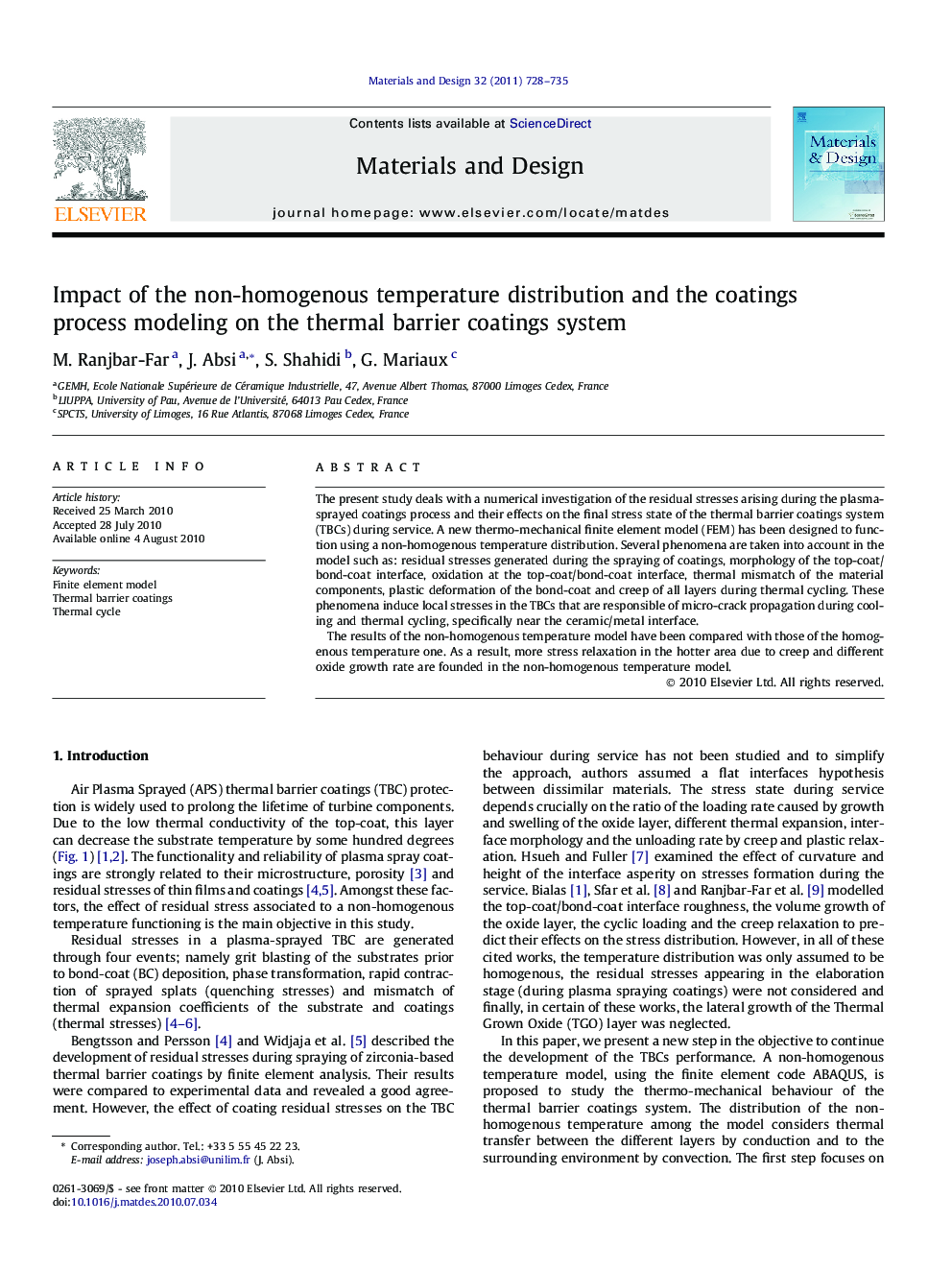| Article ID | Journal | Published Year | Pages | File Type |
|---|---|---|---|---|
| 831574 | Materials & Design (1980-2015) | 2011 | 8 Pages |
The present study deals with a numerical investigation of the residual stresses arising during the plasma-sprayed coatings process and their effects on the final stress state of the thermal barrier coatings system (TBCs) during service. A new thermo-mechanical finite element model (FEM) has been designed to function using a non-homogenous temperature distribution. Several phenomena are taken into account in the model such as: residual stresses generated during the spraying of coatings, morphology of the top-coat/bond-coat interface, oxidation at the top-coat/bond-coat interface, thermal mismatch of the material components, plastic deformation of the bond-coat and creep of all layers during thermal cycling. These phenomena induce local stresses in the TBCs that are responsible of micro-crack propagation during cooling and thermal cycling, specifically near the ceramic/metal interface.The results of the non-homogenous temperature model have been compared with those of the homogenous temperature one. As a result, more stress relaxation in the hotter area due to creep and different oxide growth rate are founded in the non-homogenous temperature model.
